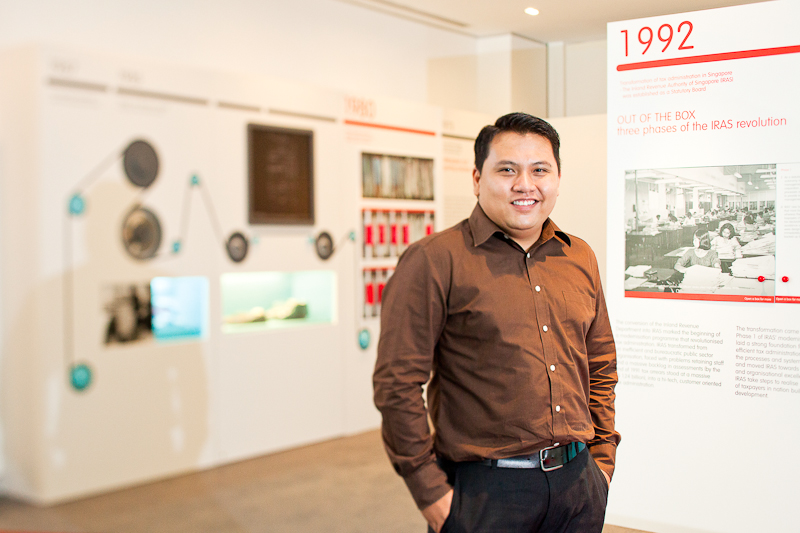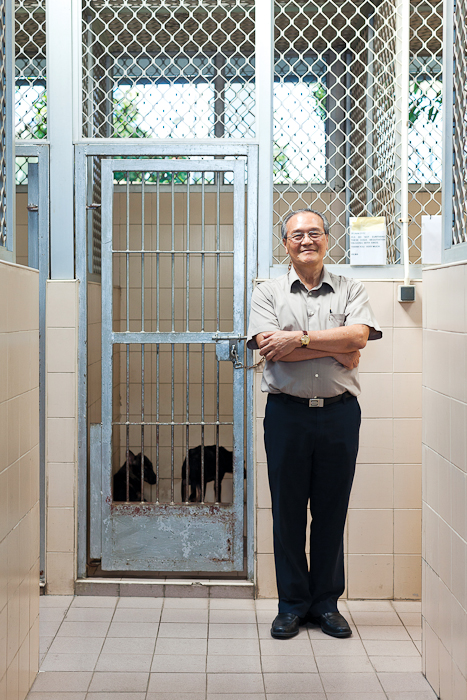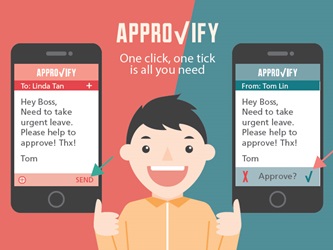From a Dog And A Pile Of Rubbish – Public Service Delivery Lessons

If there were a meter that measures public expectations of the Singapore Public Service, it is likely to be inching higher and higher. Across the board, frontline service officers are reporting a more demanding public.
They are also encountering more unreasonable, sometimes aggressive, members of the public who wouldn’t take “No” for an answer.
Just last year, a man who didn’t like the responses he got from several government agencies persisted in calling the officers repeatedly. He made over 200 phone calls in a single morning. “It was mentally and emotionally very draining for [those] officers,” said Pang Kin Keong, Chairman of the Public Service’s Quality Service committee, adding that public officers now get more training to manage such members of the public. (see sidebox ‘Saying “No”firmly’.)
Rising public expectations
In a sense, Singapore is a victim of its own success when it comes to why customer expectations are increasing. “We created a certain standard and citizens hold us to it,” said PS21 Office Director Agnes Kwek, who is responsible for service delivery policies across the Public Service.
Mr Pang agreed: “The older generations inherited a less efficient, less developed Singapore. Expectations were lower, and the improvements made were seen as a quantum jump in service levels. [Now] we’ve become inured to a very high standard of efficiency and effectiveness.”
Also, “the new generation [of Singaporeans] is more educated, well travelled and more knowledgeable,” said Assistant CEO and Quality Service Manager Roger Tan at the Civil Service College (CSC), explaining why the citizenry now wants greater accountability and a bigger say in policies.
Technology plays a key role too. Internet-savvy citizens now expect faster resolution of problems and instant access to information. And if anything goes wrong or if service simply doesn’t meet expectations, they use everything from Twitter and Facebook, to YouTube and blogs, to broadcast their complaints. Feedback received by REACH, the government feedback unit’s web portal, tripled between 2007 and 2011.
The Housing Development Board (HDB) says one area it finds relatively challenging is email correspondences. “We receive requests from customers demanding a reply to their email within two to three working days. At times, they don’t realise their case is complex and requires more time for investigation,” said Goh-Wong Tze Ying, HDB’s Director of Organisational Excellence.
Underlying factors
There are deeper issues worth examining. To start with, the ever-increasing range of government programmes could result in over-complicated systems, hampering the delivery of better customer service. Head of Civil Service Peter Ong explained: “People have commented that the Government is quite prolific at conceiving new schemes. This may lead to a proliferation of schemes that becomes complex and challenging to administer and access.”
The way Key Performance Indicators (KPIs) are used can hinder good service too. There may be a disconnect between the agency and the public where KPIs are concerned, said professor Marcus Lee, who heads the Singapore Management University’s Institute of Service Excellence.
KPIs tend to be driven by agencies’ needs and what they are capable of delivering, rather than by the customer so Prof Lee suggested agencies make sure they link KPIs to the organisation’s vision and mission, and to actual customer needs. A good example of this, he said, was the Inland Revenue Authority of Singapore (IRAS)’s introduction of the innovative No-Filing Service (NFS) in 2008. Under the NFS, employers can submit information directly to IRAS, and taxpayers whose employees do so, do not need to file a tax return (unless they have other sources of income). Instead of adding more staff to handle queues and queries to fulfil its KPIs of getting tax returns filed, the agency thought out of the box in implementing the NFS. It was a case of an organisation meeting both its KPIs and customer needs.

There is sometimes a gap between the officers delivering the service and the people receiving it. Well-educated public officers may have difficulties, for example, in fully understanding the situations of lowly educated or out-of-work citizens. One case in point is job fairs, said Prof Lee, since fresh graduates who have never lost a job are often assigned to help out-of-work job seekers in their 40s and 50s. When the gaps are so wide, it is difficult to connect.
And finally, some issues are compounded when there’s no clear agency in charge. While the Public Service’s “No Wrong Door” policy is designed to solve such problems, even Deputy Prime Minister Teo Chee Hean has said there are still situations that are poorly defined and fall through the cracks. (See ‘Mopping up grey areas'.)
Mopping up Grey Areas: The Case of Public Cleaning
In 2011, a huge pile of rubbish was left uncollected for months. The reason, said the Department of Public Cleanliness (DPC) Acting Head Roger Ng, was that agencies engaged different contractors for cleaning different areas. Drains were under the Public Utilities Board, for example, while footpaths came under the Land Transport Authority (LTA). For this pile of rubbish, it wasn’t clear who was responsible. The search for a rightful “owner ” took months; the pile of rubbish languished and sparked criticism from the public who couldn’t understand the inaction. This prompted the founding of an inter-agency Public Cleanliness Steering Committee to look into the issue. The Committee eventually set up DPC as a whole-of-government approach to cleaning roads, pavements, drains and other common areas. DPC would take care of all municipal cleaning services across government agencies. The new department taps on technology to enhance its work: Radio Frequency Identification technology is used to tag and track litter bins and web-based cameras enable remote monitoring of cleanliness in public areas. Public officers are happier too. National Environment Agency Officer Manjit Singh said he is now able to spend more time on inspections and clean-up, rather than coordinating with other agencies to figure out who is responsible.

Situations can get tough when you have to say “No” to customers. Here’s what tax officer Mohamad Fauzi Bin Mohamad (above) did when he was confronted with a difficult taxpayer who was upset at having to pay a penalty for her late tax return and shouted at him. Mr Fauzi calmly continued to explain why the fine was applicable. His patience and empathy finally calmed her down and she paid the fine. Mr Fauzi’s firm yet sincere service turned a nasty situation into one with a positive ending.
Identifying the gaps
The first step is to identify the gaps and develop plans to tackle them. At a broad level, Ms Kwek said that an inter-agency team’s thorough review in 2010 of service principles led to a new service paradigm based on people-centricity, mutual courtesy and respect, and shared responsibility for public outcomes. (See ‘New Service Principles’.)
New Service Principles
The Public Service introduced the principles of CARE (Courtesy, Accessibility, Responsiveness and Effectiveness) in 1995. Following a thorough review in 2010, three new service principles were added in 2011. They are: People-Centricity, Mutual Courtesy and Respect, and Shared Responsibility for the Public Good.
What is being stressed now is for agencies to design and deliver services from the public’s point of view, instead of what the Public Service thinks is most efficient and logical. Officers are now being exhorted to “put ourselves in the shoes of our customers” so methods such as design thinking are being encouraged. (See Challenge Jan/Feb 2011 for the cover story on Design Thinking.)
Next, the PS21 Office identifies “structural problems” and solves them so that the causes of issues, rather than mere single problems, are resolved.
Leveraging that new paradigm, the Public Service is changing processes, structures, training and technology to raise service delivery levels. If problems aren’t resolved within a certain number of days, they get escalated from the frontline up to the agency’s Quality Service Manager, and sometimes even to the PS21 Office.
Whose turf is it anyway?
The “No Wrong Door” policy, for instance, was designed to make sure members of the public get directed to the right place, even if they start out at the wrong agency. However, a review of the policy in 2011 found that while it has resolved many issues, it does not work so well when the issue is in a grey area where no agency is clearly in charge, or where the problem can only be addressed by several agencies working in tandem.
Mr Pang related this story to Challenge: “A dog was knocked down by a car on a public road. The question posed to the member of the public who reported it was: Is the dog dead or alive, and where is the dog now lying? If the dog is dead, it would be NEA (National Environment Agency)’s responsibility, but if it is still alive, AVA (Agri-Food & Veterinary Authority of Singapore) would take charge. It could also be LTA’s responsibility if the dog is still lying on the road, but if it now lies on the adjoining grass verges, then NParks (National Parks Board) should be alerted.”
Such cases lead to frustration because members of the public don’t care which agency is in charge. All they want is to have someone from the government take care of the matter.
To cope with what Mr Pang described as “turf ” issues, the First Responder Protocol (FRP) was introduced. With the FRP, an agency which has some ability to deal with the issue, even if the issue is not under its charge, should adopt a “just do it first” mentality and lead an inter-agency response. This presents to the public a more coordinated government; more importantly it tackles the public’s concerns immediately, reflecting its new people-centric service principle.

Earlier this year, there was a request to trim an unruly grass patch. Though agencies were unable to quickly determine which agency was in charge, the Singapore Land Authority went ahead to get their contractor to trim it as it had received the feedback first. It then claimed the amount incurred from the rightful agency. Turf issue resolved.

Principal Animal Welfare Inspector Soh Seng Beng (above) from AVA has devoted 37 years to animal welfare. He leads a team of junior officers to inspect pet shops and farms, and to investigate animal abuse cases. Mr Soh was praised by his colleagues for often going the distance to give great service. Once he was so determined to check on the well-being of a dog that he agreed to visit the dog’s owner at midnight – the only time the owner said he was available. Mr Soh will retire from the Public Service this year.
Lessons from Abroad:
One Stop Shop
Consulting firm PwC reported that public sector agencies worldwide are increasingly adopting a “One Stop Shop” model that enables customers to use a single access point to get information and services. Residents in New York can dial 311 to speak to a customer service agent 24/7 about where to get help, for example, while Hong Kong residents can log onto HKGov.org for the same. Across the world a “One Stop Shop” has the potential to “improve the customer experience and reduce cost by transforming the way governments deliver services,” PwC said. The Singapore Public Service has also conducted in-depth studies on the feasibility of a one stop call centre, including a visit to New York City’s 311 team to understand the challenges. While there are some considerations such as resource and training, work is underway to introduce integrated hotlines; for example, the Department of Public Cleaning’s hotline and the People’s Association’s OneConnect hotline.
Speech analytics
The London Borough of Lambeth Council is tapping on speech analytics technology to improve its service levels. It is expected to save more than £2 million by using this technology, which was originally designed for military communications. While the military uses the technology to spot words like “bomb” or “terrorist”, the Council uses it to highlight phrases like "repeat visits" and "second time I’ve called you". Currently, it takes staff an average of three calls to solve residents’ issues, costing the Council about £5 per call. The Council expects to identify key problems across hundreds of calls and help get things right the first time, thereby driving efficiency up and costs down.
Improving training
Apart from introducing changes to structure and processes, training – one of the most important steps to improving service – is being revamped.
CSC’s Mr Tan said that in the past, training focused narrowly on procedures and what to do. Now, he said, it focuses on soft skills, such as building relationships, empathising with customers and co-creating solutions.
“We rely more on experiential learning to deepen the value of training”, he said, so officers now engage in more role plays or simulations. The College has also rolled out training to enhance teamwork and will be developing similar programmes for using social media and other newer technologies.
Individual agencies are also ramping up customer service training. HDB has an elaborate training roadmap for frontline staff. This includes training staff to draft better email responses, with some of the outstanding replies compiled into a manual for other officers to refer to.
Learning to deal with tough customers is also essential. The extremely unreasonable ones can place a burden on public resources with their demands. This means staff have to be trained to handle them deftly and know when to “disengage” tactfully, and focus on other customers who genuinely need their help.
Tapping technology
Technology is another tool wielded by the Public Service to improve customer experience. As mentioned, IRAS introduced the No-Filing Service in 2008 that relieves employees of the need to file tax returns if their employers do so directly. HDB launched the Mobile@HDB application to complement its HDB Infoweb, giving customers with smartphones another channel to interact with the Board.
Technology also helps public officers to improve service delivery. NEA Officer Manjit Singh, who is responsible for cleaning services, now uses his new office-issued iPad to respond to problems more quickly. While on-site, he can send out details and photographs of problems immediately, without having to wait till he returns to the office.
From tweaking a broad-based framework at the top to introducing better technology and process improvements on the ground, a breakthrough in service delivery by government agencies is on the way. And as innovations such as the FRP have shown, so long as the Public Service continues to review and adapt its policies by standing in the shoes of the public, it has a good chance of pleasing even the toughest of them.
- POSTED ON
Sep 14, 2012
- TEXT BY
Richard Hartung
- PHOTOS BY
John Heng
-
Deep Dive
Strengthening Singapore’s Food Security
-
Humour
Apps You Wish You Had









